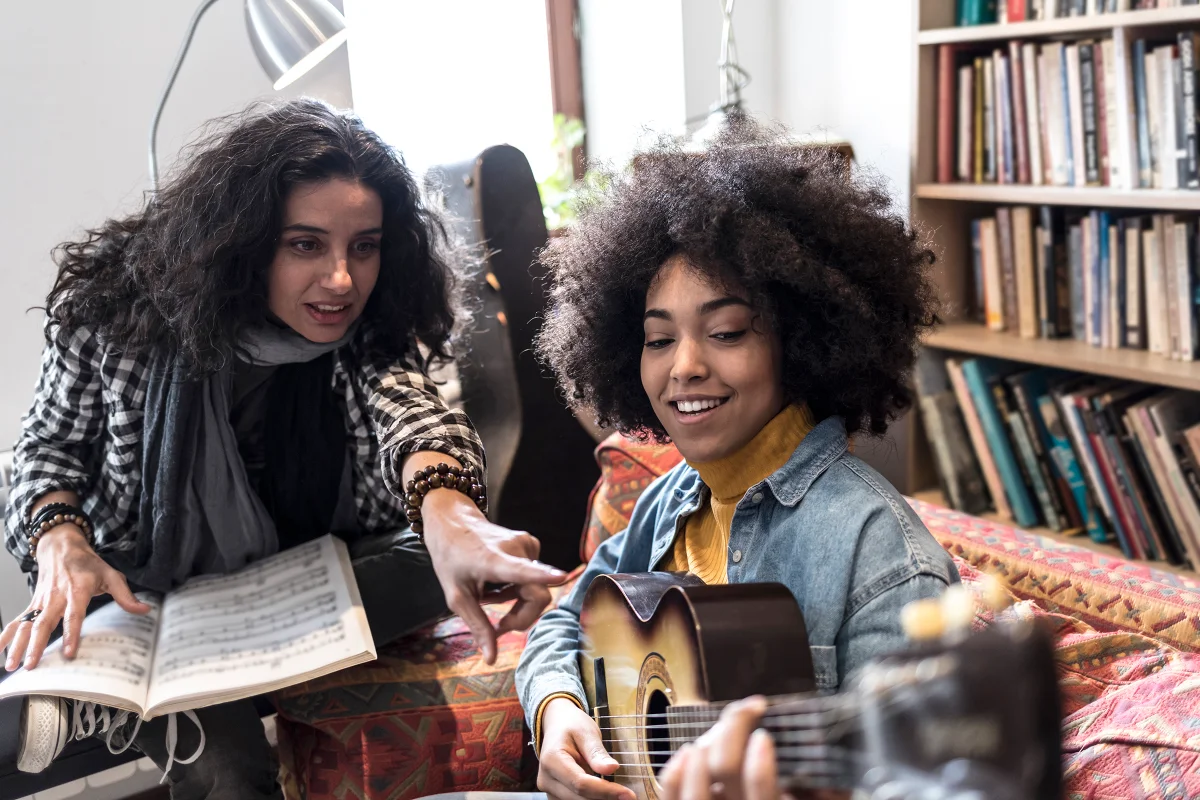
As parents, we constantly seek ways to enrich our children’s lives with experiences that nurture their growth, creativity, and intellect. Music education stands out as a beacon of cultural enrichment, offering more than just the joy of sound but fostering discipline, boosting cognitive skills, and enhancing emotional expression.
With a world of instruments at our fingertips, the question isn’t whether your child should embark on a musical journey but which instrument will unlock their potential and ignite their passion.
Dive into this guide to discover the perfect musical match for your child, tailored to their age, interests, and the symphony of their soul.
Piano
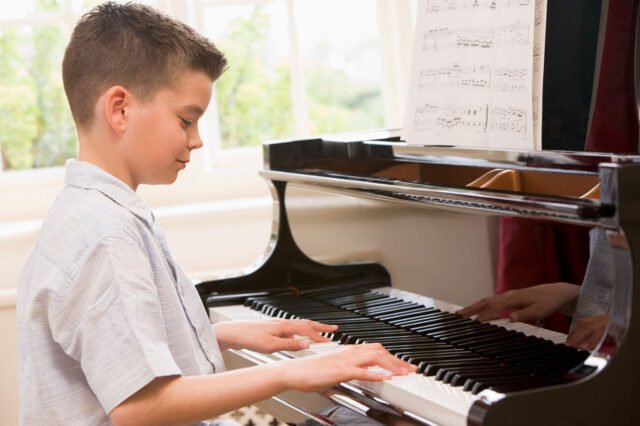
With its grand presence and timeless sound, the piano offers a solid foundation for any child’s musical education. Ideal for young learners as early as four years old, the piano’s straightforward layout fosters an intuitive understanding of music theory, from scales and chords to harmony and melody. It’s a magnificent fit for children who show an early interest in music, possess a curiosity for different sounds, and have the patience to sit through lessons and practice.
Learning the piano teaches children the importance of hand-eye coordination, discipline, and the rewards of perseverance. It opens up a world where both hemispheres of the brain dance in harmony, enhancing cognitive functions and emotional intelligence.
For the child fascinated by the magic of creating music, who revels in the joy of hitting keys to produce musical sounds, the piano serves as a gateway to exploring the vast universe of music. It’s a journey that begins with simple tunes but has the potential to grow into a lifelong passion for all genres of music.
Ukulele
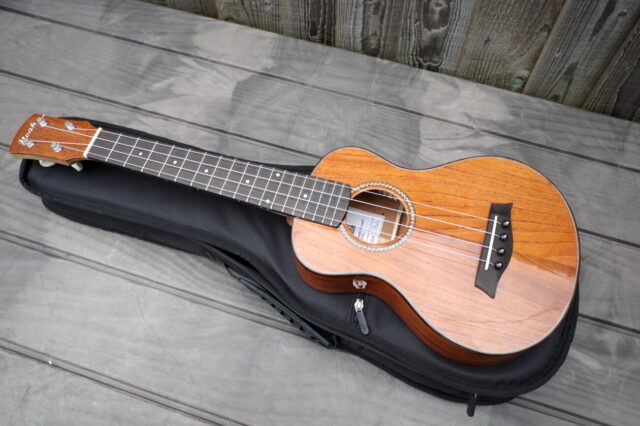
The ukulele, with its light, cheerful sound, and small size, is an inviting instrument for children as young as four years old. It’s an excellent introduction to string instruments, easier to handle than a guitar for small hands, and offers a fun, accessible way into music.
The ukulele fosters a love for music through its simplicity, allowing children to quickly learn chords and play songs, providing an instant sense of achievement and joy. Its playful tone and straightforward learning curve make the ukulele perfect for the child with a sunny disposition, a love for singing, and a desire to perform.
Learning the ukulele teaches basic music theory, rhythm, and coordination, but more importantly, it encourages a joyful engagement with music, often turning practice time into a sing-along session.
The ukulele is a beacon of fun and simplicity for families seeking a light-hearted entry point into music for their children. It paves the way for relaxing and enjoyable musical exploration, proving that sometimes, the smallest instruments can bring the greatest joy.
Recorder
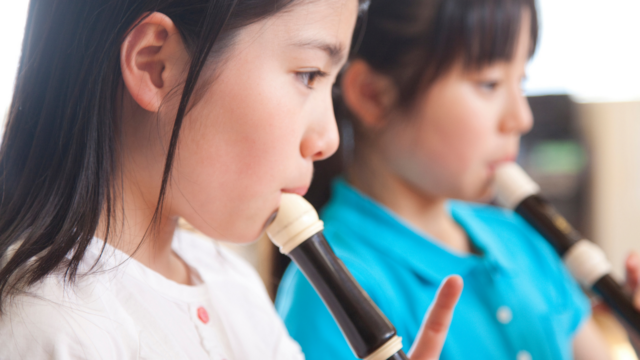
Often introduced in school music programs, the recorder is a fantastic first-wind instrument for children around five or six. Lightweight, affordable, and easy to handle, it provides a practical introduction to breath control, finger placement, and reading music.
The recorder’s simplicity allows children to quickly grasp the basics of making music, instilling a sense of achievement and encouraging them to explore more complex wind instruments as they age.
The recorder is especially suitable for children who are naturally drawn to the melodic sounds of wind instruments but are not yet ready for the physical demands of larger options like the flute or clarinet.
It teaches the fundamentals of musical timing, rhythm, and the expressive potential of breath and finger coordination. This instrument might be the first step for a child who enjoys the light, airy sounds that fill the room with a breath of life, leading them toward the orchestral wonders of woodwinds.
Violin
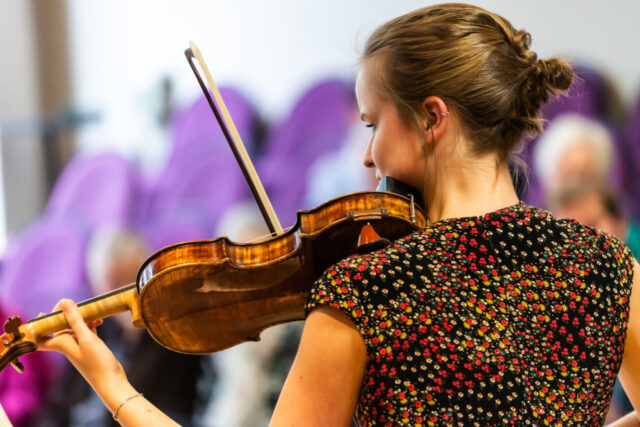
The violin is a beacon of elegance and sophistication in string instruments. Suitable for children as young as four, with specially sized instruments available to accommodate small hands, the violin offers a unique blend of physical coordination, musicality, and emotional expression. It’s a challenging yet rewarding choice for the dedicated child inclined towards refined sounds and the intricate beauty of string music.
Learning the violin involves developing a keen ear for pitch, a steady hand for bowing, and the patience to master posture and finger placement. It’s an instrument that demands dedication, making it a perfect match for detail-oriented children who enjoy a challenge and possess a deep well of patience and determination.
The journey through violin lessons teaches not just music but resilience, attention to detail, and an appreciation for the layered complexity of classical compositions. This is precisely why your child needs violin lessons; it’s not just about learning an instrument but about cultivating a rich inner world of discipline, persistence, and artistic sensitivity.
The decision to embark on violin lessons is a commitment to nurturing a profound musical talent, laying the foundation for a future where music and emotion intertwine in the beautiful language of the violin.
Drum Set – The Rhythmic Backbone
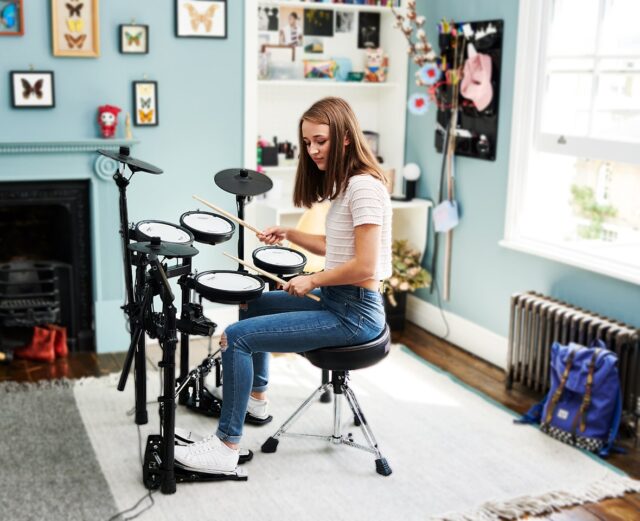
The drum set, a powerhouse of rhythm and energy, is an excellent choice for children, typically starting around the age of six or seven. It appeals to those with a natural sense of rhythm and a high energy level, offering a physical and dynamic outlet for creative expression.
Drumming teaches coordination between hands and feet, timing, and the foundational principles of rhythm that underpin all music genres. It’s perfect for the child who finds themselves tapping along to beats, drawn to the pulse of music, and eager to be at the heart of the musical action.
Learning to play the drums not only develops musical skills but also enhances concentration and physical fitness. It can be a therapeutic exercise in energy release and focus, making it ideal for children who benefit from active learning.
The drum set allows for immediate feedback with every strike, providing a sense of accomplishment and progress that is vital for building confidence and motivation in young learners.
For children who love to be in the midst of things, leading the tempo, and enjoy the physical aspect of making music, the drum set is a gateway to understanding music’s rhythmic structure and becoming the backbone of any musical ensemble. It’s a path that demands vigor, precision, and a relentless pursuit of the groove, turning the enthusiastic novice into the heartbeat of a band.
Acoustic Guitar
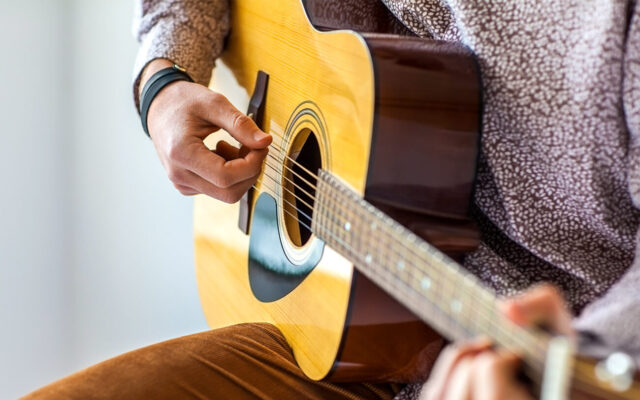
An acoustic guitar, with its gentle curves and warm, resonant tones, offers a versatile and intimate musical experience for children from age eight. It’s a fantastic choice for those who are drawn to the idea of singing along to their playing or writing their own songs. The guitar’s portability and the immediacy of its sound make it a constant companion for personal expression and musical exploration.
The learning process introduces children to chord progressions, strumming patterns, and fingerpicking techniques, fostering an adaptable skill set that applies across many musical styles, from folk and country to rock and pop. It encourages independence, creativity, and the development of a unique musical voice.
An acoustic guitar is particularly appealing to the storyteller, the dreamer, and the independent thinker who finds joy in the craft of songwriting and the beauty of acoustic melodies.
Choosing an acoustic guitar for your child means encouraging a journey of self-expression, where music becomes a diary, a confidant, and a means of connecting with others. It suits the child who appreciates the nuances of sound and the tactile feel of strings beneath their fingers, ready to embark on a lifelong relationship with music that is as personal as it is universal.
Choosing the right instrument for your child is a journey that intertwines with their personal growth, interests, and the unique voice they wish to share with the world. Remember, the goal is to learn an instrument and foster a lifelong love for music, creativity, and self-expression. Let their musical journey reflect their personality, aspirations, and the endless possibilities music brings.







